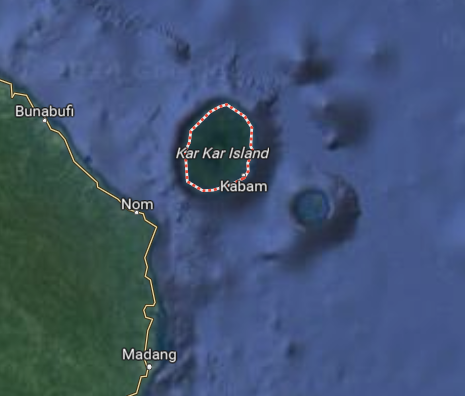Bean suppliers
The uniqueness of each bar craft chocolate is a reflection of the beans; the climate, soil type and agri practices where they are grown, and the micro climate where fermenting and bean drying takes place. To make world class chocolate, as we do at Charley’s, then requires careful handling and processing.
Charley’s sources its beans from high quality growers:
· its own plantations, Mt Edna and Block 4
· farms in FNQ and PNG
· our FNQ growers’ farms are local to Charley’s (Granadilla Rd, South Johnstone, Utchee Creek, King Ranch) and then Daintree.
· PNG beans are sourced from a long-time supplier on Karkar Island
· Farms from Pacific countries (Solomon Islands, Vanuatu) from time to time
Cassowary Coast, Far North Queensland

Local economy
The Cassowary Coast Region is a local government area in far north Queensland, south of Cairns and centred on the towns of Innisfail, Cardwell and Tully. Mission Beach lies between Innisfail and Tully. Mission Beach became part of the Johnstone Shire in 1937.
Cassowary Coast’s Gross Regional Product was $1.74 billion in the year to June 2022, growing 9.4 % from previous year. It’s major industry is Agriculture, Forestry and Fishing which generated 21% of total employment. In comparison, Tourism and Hospitality represented 6.1% of total employment.
Ideal cocoa growing conditions are based on equatorial distance and climate. Cocoa grows well in warm and wet places such as Mission Beach which is at a latitude of 17.8691 and longitude of 146.1063 and averages 3.41 meters of annual rainfall.
History
The original inhabitants, the Djiru-speaking Aboriginal people were linguistically, culturally and socially related to the Dyirbal, Girraman and Gulngay groups of the Tully and Murray River districts. Expert hunters, fishers and gatherers, they harvested the rich plant and animal resources of the rainforests and coast. They excelled in making canoes and rafts. Contact with early navigators and coastal surveyors as well as with beche-de-mer fishing boats occurred long before the first white people settled the area.
The first white settlers were the Cutten brothers in 1882. They settled at Bingil Bay and farmed mangoes, bananas, pineapples, coffee, citrus fruit and coconuts. Cargo boats carried their produce south. They were followed by the Unsworths at Narragon Beach; the Garners at Garner’s Beach; and the Porter brothers at Porter's Creek (or “Wongaling Creek”) at the south end of North Mission Beach.
Mission Beach


Karkar Island PNG


Karkar Island - PNG
Climate
Karkar Island, 30 kilometres from the mainland and just north of Papua New Guinea’s (PNG) capital Port Moresby.
PNG has a tropical climate. Monsoons drive its extreme rainfall variations. The dry season is from June to December and the rainy season from December to March, with relative humidity between 70 and 90 percent. Annual rainfall in Madang province, which includes Karkar Is, is 3,000mm to 4,000mm, similar to Mission Beach (3,410mm)
PNG Cocoa

PNG produces just under 1% of the world’s cocoa crop which, in 2019/20, equated to 40,000 metric tonnes. Cocoa is PNG’s third largest agricultural export.
Charley’s has a rich history in PNG. Our first chocolate bar was made from PNG cocoa beans, imported from the Madang province. Soon PNG chocolate became a favourite of Charley’s customers for its rich bold flavours. The cocoa seeds we planted at Charley’s Mount Edna Mission Beach plantation in 2012 were hybrid varieties of Trinitario and Forestero from the Cocoa Coconut Institute research station at Madang.
Hannah Wheaton, Pacific Horticultural and Agricultural Market Access Plus Program Advisor to PNG, introduced us to growers from Karkar Island. Karkar Island’s rich volcanic soils and warm tropical climate nurture some of the world’s best copra plantations and creates some of the world’s best chocolate. It inspires our Karkar Island 70% dark chocolate, which is rich and full bodied and our 52% Karkar Island milk chocolate, which is often described as ‘decadent’.
In 2017 Lynn Jahnke was invited as a judge to PNG’s inaugural Cocoa Show- Cocoa Warwagira- held in Kokopo near Rabaul. The Show aimed to lift PNG’s cocoa quality to international standards and improve its export potential. The judges evaluated more than 80 cocoa samples over three days. When the Gold, Silver and Bronze winners were announced, Charley’s Karkar Island chocolate won the Silver Medal–an exciting moment!
In July 2019, Lynn returned to PNG to judge the second Cocoa Show with Luke Spencer from Spencer Cocoa NSW. They were impressed by the big improvements in flavour achieved by local farmers in just two years. Charley’s continues to support PNG and the has also imported beans from Vanuatu and the Solomon Islands.
